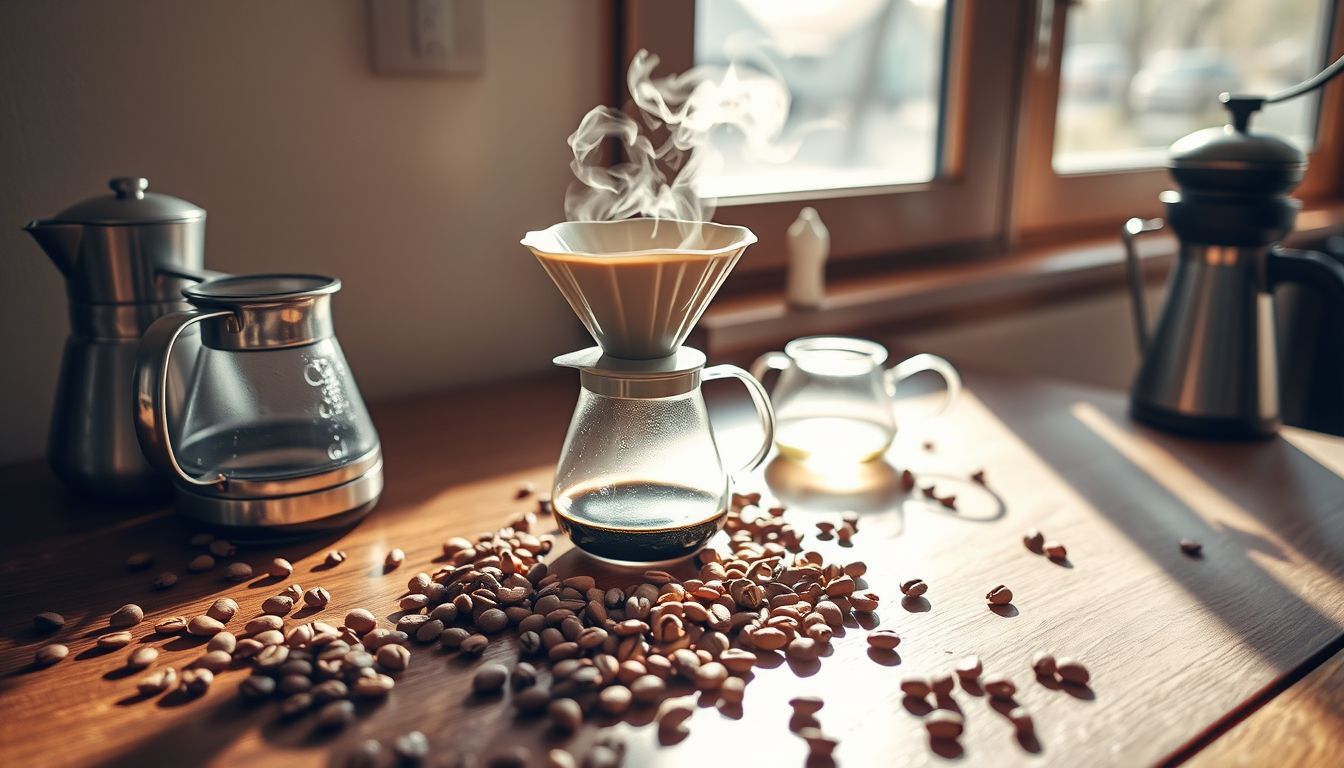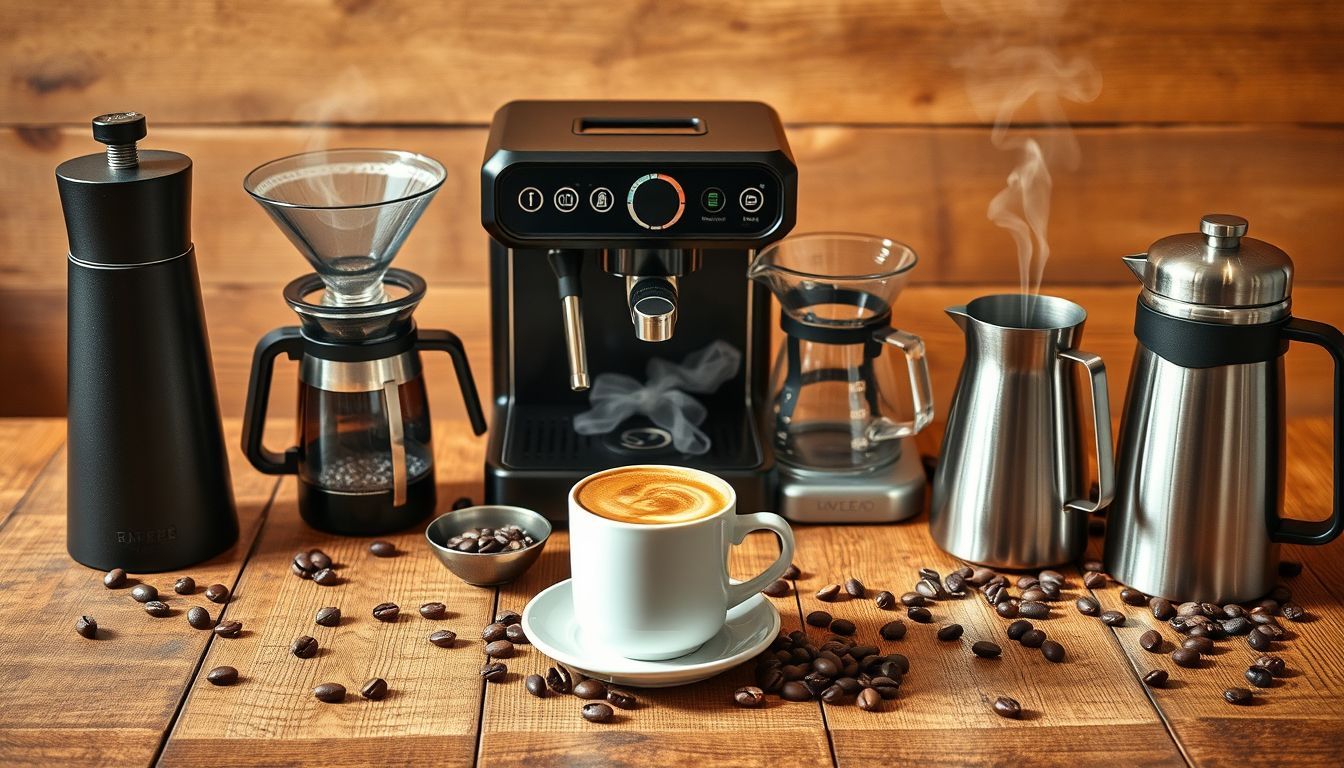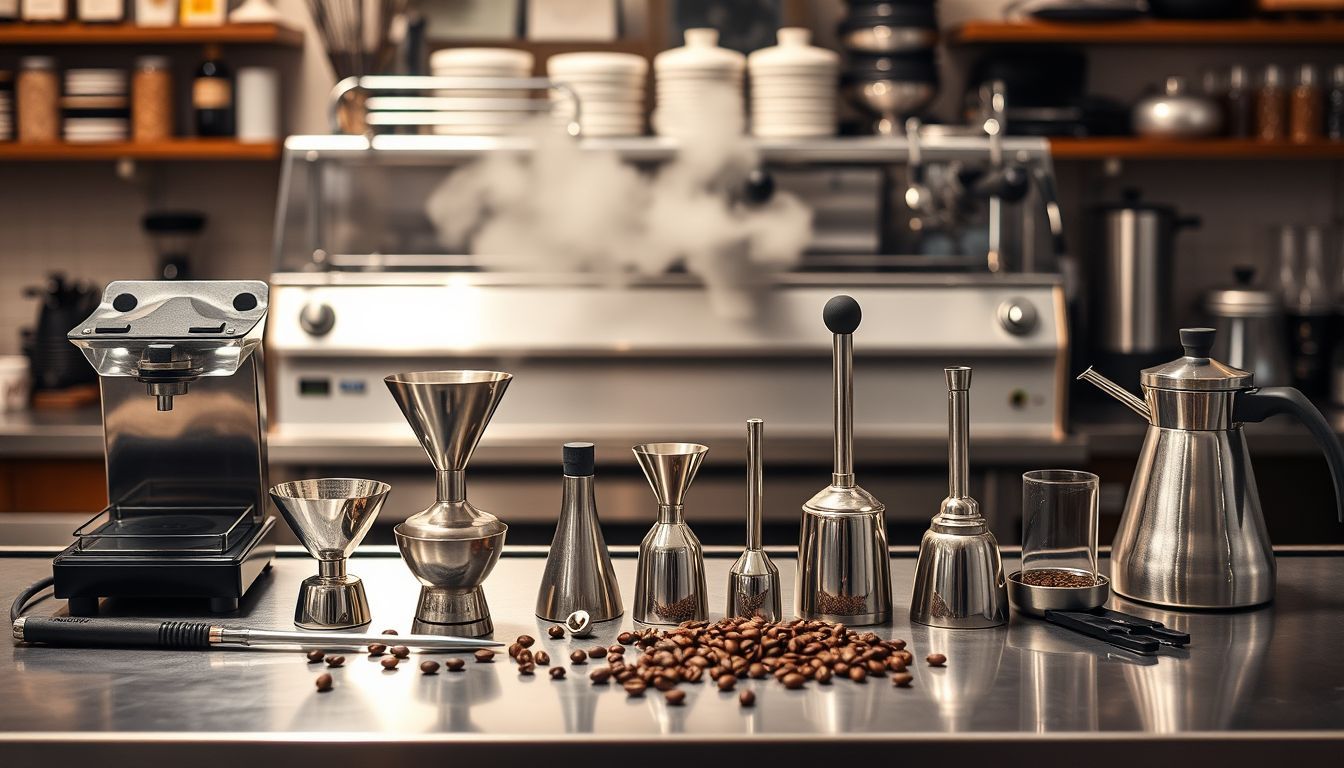The Best Coffee Equipment for Making Light Roast Shine
Light roasts are like morning dew on coffee cherries—delicate, nuanced, and requiring the gentlest touch. Discover the brewing equipment that honors these ethereal beans and unlocks their hidden poetry.

Amazon Affiliate Disclosure
This post contains affiliate links. If you purchase through these links, we may earn a small commission at no additional cost to you.
There’s something almost sacred about a light roast coffee bean. Like a whispered secret from the mountainside where it grew, it carries within its pale, dense structure the very essence of terroir—the soil, the altitude, the morning mists that kissed the coffee cherry as it slowly ripened under the canopy. Yet for all its inherent beauty, light roast coffee is perhaps the most misunderstood and poorly executed expression of our beloved bean.
I’ve spent countless mornings in origin countries, watching farmers carefully select only the ripest cherries, their hands moving with the practiced grace of generations. The reverence they show for their crop humbles me, and it’s this same reverence we must bring to our brewing when we encounter these lightly roasted gems. The equipment we choose becomes our bridge between the farmer’s intention and our cup—a sacred responsibility that demands both understanding and the right tools.
Understanding the Light Roast Soul
Before we explore the vessels and instruments that will serve as our guides, we must first understand what makes light roast coffee so uniquely challenging and rewarding. These beans, kissed only briefly by the roaster’s flame, retain much of their original cellular structure. They’re denser, harder, and more resistant to extraction than their darker cousins. Like a shy forest creature, they require patience and the right approach to reveal their secrets.
The flavors locked within are often bright and complex—notes of citrus, florals, and stone fruits that speak of the coffee’s origin story. But these delicate characteristics can easily be overwhelmed by aggressive brewing or masked by inadequate extraction. The equipment we choose must honor this delicacy while providing the precision needed to coax out every nuanced note.
The Grinder: Your Most Sacred Tool
Burr Grinders: The Foundation of Excellence
If I could gift every coffee lover just one piece of equipment, it would be a quality burr grinder. For light roasts, this becomes even more critical. The dense structure of these beans demands a grinder that can create uniform particles without generating excessive heat—heat that would drive away those precious volatile compounds we’ve worked so hard to preserve.
I’ve found that conical burr grinders, with their slower rotation and gentler crushing action, treat light roast beans with the respect they deserve. The OXO Brew Conical Burr Coffee Grinder delivers consistent grind size, precision settings, and minimal retention—ideal for the precision light roasts demand.
The Importance of Grind Consistency
Light roasts are unforgiving of inconsistent extraction. A grind with too many fines will over-extract, bringing bitter notes that mask the coffee’s inherent sweetness. Too many boulders, and you’ll under-extract, leaving the cup thin and sour. The grinder becomes your first act of intention, setting the stage for everything that follows.
Pour-Over: The Art of Gentle Persuasion
V60: A Vessel for Precision
The Hario V60, with its spiral ridges and large drainage hole, has become my preferred vessel for light roast exploration. Its design allows for precise control over flow rate and extraction time—crucial elements when working with these dense, complex beans. For the ceramic classic version, I turn to the Hario V60 Ceramic Coffee Dripper, Size 02, which retains heat beautifully and ensures an even, gentle pour.
When I brew a light roast Ethiopian Yirgacheffe in my V60, I’m not just making coffee—I’m conducting a conversation between water and bean, mediated by time and temperature.
Chemex: Clarity Through Filtration
For those seeking the purest expression of a light roast’s character, the Chemex offers unparalleled clarity. Its thick filters remove oils and fine particles that might muddy the cup, allowing the coffee’s inherent brightness to shine through like sunlight through mountain air. I use the Chemex Pour-Over Glass Coffeemaker, Classic 8-Cup to achieve that pristine clarity and depth.
Kalita Wave: Consistency in Chaos
The flat-bottom design of the Kalita Wave provides more even extraction than its cone-shaped cousins, making it particularly forgiving for those still learning to navigate light roast brewing. The three small holes regulate flow rate, preventing over-extraction that can turn a delicate coffee bitter and harsh.
Immersion Methods: Patience Rewarded
French Press: The Gentle Giant
While often associated with darker roasts, a French press can be a revelation with light roast coffee when used with intention. The key lies in extending the brewing time—sometimes up to six or seven minutes—allowing the dense beans time to fully surrender their flavors. I prefer the MuellerLiving French Press Coffee Maker, 34 oz, whose double-wall stainless steel design maintains temperature and ensures a clean, grit-free cup.
AeroPress: Versatility in a Compact Form
The AeroPress has earned its place in my brewing arsenal through sheer versatility. For light roasts, I often employ an inverted method with a longer steeping time, followed by a gentle press. I always reach for the AeroPress Original Coffee Press for its ease of use, portability, and crisp, clean results.
The Cold Brew Revolution
Patience as a Brewing Parameter
Cold brew might seem antithetical to showcasing light roast coffee, but when done with intention, it can reveal entirely new dimensions of flavor. The extended extraction time—sometimes 18 to 24 hours—allows even the most stubborn light roast to fully express itself. I use the OXO Good Grips Cold Brew Coffee Maker, 32 oz, appreciating its clean filtration and consistent results.
The key with light roast cold brew lies in the grind—slightly finer than traditional cold brew—and the ratio. I often use a 1:8 ratio rather than the typical 1:10, compensating for the light roast’s resistance to extraction.
Espresso: The Ultimate Challenge
Machines That Honor Delicacy
Pulling espresso from light roast beans is perhaps the ultimate test of both equipment and skill. These beans require precise temperature control and often benefit from longer extraction times. The Breville Bambino Plus Espresso Machine, with its PID temperature stability and automatic steam wand, has proven capable of coaxing beautiful shots from even the most challenging light roasts.
The key lies in adjusting our expectations. Light roast espresso won’t have the syrupy body of a traditional Italian roast, but it will offer complexity and brightness that can be absolutely transcendent when properly extracted.
Conclusion: A Return to Reverence
As I write this, the morning light filters through my kitchen window, illuminating a cup of light roast Kenyan coffee that tastes of black currant and jasmine. The V60 and Chemex sit empty beside it, having served their purpose as conduits between the farmer’s intention and my morning contemplation.
The equipment we choose for light roast coffee is more than mere tools—they are instruments of translation. When we invest in the right tools and approach light roast coffee with the respect it deserves, we’re rewarded with something magical: a direct connection to the place where the coffee grew, the hands that picked it, and the roaster who carefully preserved its essence. In that cup, we taste not just coffee, but the very soul of the earth from which it came.

Ben Carter
I spent the first part of my life learning the language of the wild—the rustle of leaves, the silence of snow, the resilience of a lone tree. In my writing, I try to translate that language, exploring how the landscapes around us shape the landscapes within us. My stories are quiet, but I hope they speak to a deeper part of you.


